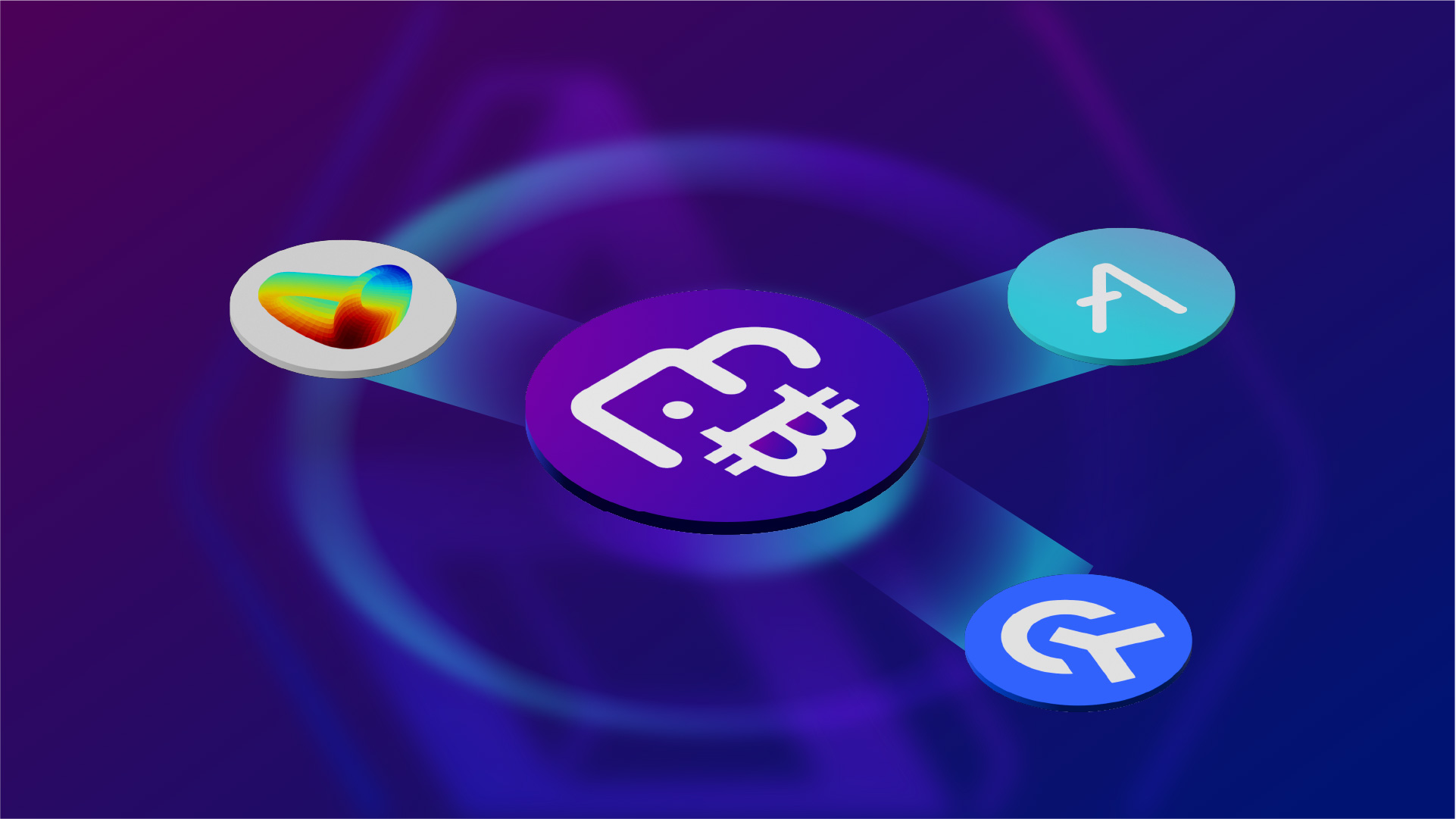dlcBTC is a non-custodial representation of Bitcoin (BTC) on the Ethereum network. It leverages Discreet Log Contracts (DLCs) to ensure only depositors can access locked BTC, eliminating third-party custody risks. Moreover, with dlcBTC, the DLC lockbox only pays out to the depositor. This mechanism ensures that only the depositor receives the BTC deposit in case of a security breach.
This article presents the boundless use cases of dlcBTC in decentralized finance (DeFi) protocols, namely: borrowing and lending, liquidity mining, and margin trading.
DeFi Use Cases of dlcBTC
-
Using dlcBTC as Collateral in DeFi Lending Protocols
DeFi lending protocols are blockchain-based platforms that facilitate peer-to-peer lending of digital assets without intermediaries like in centralized finance (CeFi) lending. These protocols automate and secure the lending processes through smart contracts on blockchain networks. Users can supply dlcBTC to borrow stablecoins, such as USDT and USDC, which can then be reinvested.
Borrowers lock dlcBTC in smart contracts, enabling them to borrow a specified percentage of the collateral’s value. All DeFi lending protocols will require borrowers to lock up excess dlcBTC than the loan they apply (over-collateralization). The extra collateral acts as a buffer in price volatility, providing more security to the lenders.
Interest rates, determined algorithmically, vary based on supply and demand dynamics. Lenders receive interest payments, and borrowers reclaim their dlcBTC upon loan repayment. Notable DeFi lending protocols include Compound, Aave, Ajna, and MakerDAO. They provide open, transparent, and permissionless access to financial services, democratizing lending and borrowing in a trustless manner on the blockchain.
-
Using dlcBTC in Liquidity Mining
Liquidity mining, sometimes called yield farming, is a DeFi practice involving users providing liquidity to a decentralized platform in exchange for rewards. Participants commit their assets to liquidity pools, typically pairs of tokens, facilitating trading or lending activities on the protocol.
In liquidity mining, users are incentivized with additional tokens as a reward for supplying liquidity to these pools. The rewards often come from the platform’s native governance tokens or other utility tokens. The distribution of rewards is usually proportionate to the amount of liquidity a participant provides, encouraging greater contributions to enhance the liquidity and functionality of the decentralized platform.
Liquidity mining serves multiple purposes. Importantly, it helps bootstrap liquidity for new projects, making trading more efficient, and encourages user engagement by offering an opportunity to earn additional tokens. dlcBTC holders can mine liquidity by converting their holdings to USDT, USDC, or any other accepted token.
Furthermore, liquidity mining is essential in Automated Market Makers (AMMs) such as Curve, which specialize in stablecoin trading. Curve pools leverage liquidity provided by users to facilitate seamless and low-slippage trades between stablecoins. By participating in these pools, dlcBTC holders contribute to the efficiency of stablecoin swaps and earn rewards in the form of trading fees and additional governance tokens. This synergy between liquidity mining and AMMs like Curve enhances the overall liquidity landscape, fostering a robust and active decentralized financial ecosystem.
Note: Liquidity providers should consider risks such as impermanent loss and market volatility associated with liquidity mining.
-
Using dlcBTC in Margin Trading
DeFi margin trading is an investment strategy that enables crypto investors to borrow funds to amplify their trading positions on decentralized exchanges. It allows investors to trade assets with leverage, meaning they can control a larger position size than their actual capital. However, this strategy makes margin trading a high-risk investment, as losses can exceed the initial investment.
Here’s how DeFi margin trading works:
-
Collateralization: Traders provide collateral in the form of dlcBTC or any other accepted asset to a smart contract on a decentralized platform.
-
Borrowing: Once collateral is provided, traders can borrow additional assets, usually exceeding the value of their initial collateral.
-
Trading Positions: Traders use the borrowed funds to enter long (betting on the price increase) or short (betting on the price decrease) positions in the crypto markets.
-
Interest Payments: Traders are usually required to pay interest on the borrowed funds for the trade duration.
-
Profit or Loss Settlement: Traders repay the borrowed funds and any accrued interest after closing the position.
DeFi margin trading allows traders to amplify their gains potentially, but it comes with increased risk due to the possibility of higher losses. However, DeFi margin trading operates on decentralized platforms, giving users more control over their funds compared to centralized alternatives. Still, users should carefully manage risks and be aware of potential liquidation scenarios.
The Advantages of Using dlcBTC in DeFi Protocols
Utilizing dlcBTC for borrowing, lending, staking, or margin trading in DeFi offers distinct advantages, setting it apart from traditional wrapped Bitcoin solutions:
User Sovereignty and Eliminating Intermediaries
Unlike typical wrapped Bitcoin variants, like wBTC, dlcBTC empowers users by eliminating intermediaries through a self-wrapping mechanism. Through self-wrapping in a secure lockbox, dlcBTC ensures user sovereignty and adheres to the principle of “Not Your Keys; Not Your Coins.” This approach empowers users with direct control over their assets without relying on third-party custodians, often prone to censorship, fund mismanagement, and human errors.
Enhanced Security with DLC Lockbox
The unique feature of the DLC lockbox in dlcBTC wrapping adds an extra layer of security. In the unfortunate event of a hack, only the depositor, the rightful owner, receives the BTC deposit. This design significantly reduces the impact of potential security threats and losses, reinforcing the robustness of the DeFi ecosystem and ensuring that individual depositors’ assets remain safeguarded.
Bitcoin-Level Security without Custodial Risks
dlcBTC is secured by the full hashrate of the Bitcoin blockchain. Importantly, it doesn’t require depositors to lock or send their BTC to external custodial addresses. This distinctive approach ensures users enjoy the same level of security as Bitcoin while eliminating the risks associated with third-party custodianship, such as collateral mismanagement.
Capital Gains Tax Efficiency
Self-wrapping BTC to mint dlcBTC for use in DeFi lending protocols presents a strategic advantage for users looking to avoid capital gains taxes. Selling BTC to buy an Ethereum-compatible asset for DeFi participation triggers immediate tax liabilities in the US, for example. By using BTC as collateral to mint dlcBTC instead of selling, users can access liquidity without incurring capital gains tax, allowing them to manage their financial positions more efficiently within the evolving regulatory landscape.
Conclusion
In conclusion, the use of dlcBTC in DeFi lending protocols introduces a new paradigm of efficiency and security compared to other wrapped Bitcoin versions. By combining the principles of user sovereignty, enhanced security features like the DLC lockbox, and Bitcoin-level security without custodial risks, dlcBTC stands out as a robust choice for users navigating the DeFi landscape. Moreover, its tax-efficient approach, allowing users to access liquidity without triggering immediate capital gains taxes, brings an extra strategic advantage to BTC holders interested in DeFi lending and borrowing.



